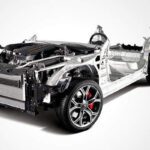Sedans and hatchbacks are both popular car body styles often considered in the same category due to their similar size and passenger capacity. However, despite these overlaps, significant differences set them apart. Understanding these distinctions is crucial when choosing the right vehicle to meet your needs. Let’s delve into the core differences between hatchbacks and sedans.
One of the most noticeable differences lies in cargo space. Hatchbacks, characterized by their combined passenger and cargo area and a rear liftgate, typically offer superior cargo capacity. The open design extending to the roofline allows for loading larger and bulkier items more easily than in a sedan.
Sedans, on the other hand, feature a separate trunk, which, while secure, often limits the size and shape of items you can transport. The traditional trunk design of a sedan prioritizes passenger space separation from cargo.
In terms of headroom, hatchbacks generally provide more, especially for rear passengers. The typically taller roofline of a hatchback design contributes to this increased vertical space, offering a more comfortable experience for taller occupants in the back seats.
Sedans, particularly those with a sloping roofline for a sleeker aesthetic, might compromise on rear headroom. However, when it comes to legroom, larger sedans often excel. Full-size sedans boast longer bodies, translating to more generous legroom for both front and rear passengers, providing a spacious and comfortable ride for longer journeys.
Maneuverability is another key area of divergence. Hatchbacks, generally being shorter in length, are often easier to maneuver in congested urban environments and tight parking spaces. Their compact dimensions make city driving and parking less stressful.
Sedans, with their longer profiles, might require a bit more care when navigating similar tight spots. However, both body styles are inherently more maneuverable than larger vehicle types like SUVs and trucks.
Regarding noise insulation, sedans typically have an advantage. The enclosed trunk of a sedan acts as a buffer, effectively isolating the passenger cabin from road and wind noise originating from the rear. This design often results in a quieter and more refined cabin environment.
Hatchbacks, with their open cargo area integrated into the passenger compartment, may experience slightly more noise intrusion. Sounds from the rear of the vehicle and the road can more readily permeate the cabin, potentially leading to a marginally noisier ride.
Finally, availability can differ between these car types, particularly in markets like the United States. Sedans generally enjoy broader availability and a wider selection of models and trim levels in the US market due to their historical popularity.
Hatchbacks, while gaining traction, have traditionally been more prevalent in European markets. Consequently, US dealerships might stock a narrower range of hatchback models compared to sedans, potentially limiting immediate choices.
Buyer’s Tip: It’s important to note that automotive designs are constantly evolving. Some modern hatchbacks are styled with a more sedan-like sloping roof, which can impact rear headroom. Conversely, some sedans are designed to maximize cargo space. Therefore, always test drive vehicles you are considering and meticulously review the specifications to ensure they align with your specific needs and preferences, regardless of whether it’s classified as a hatchback or sedan.
